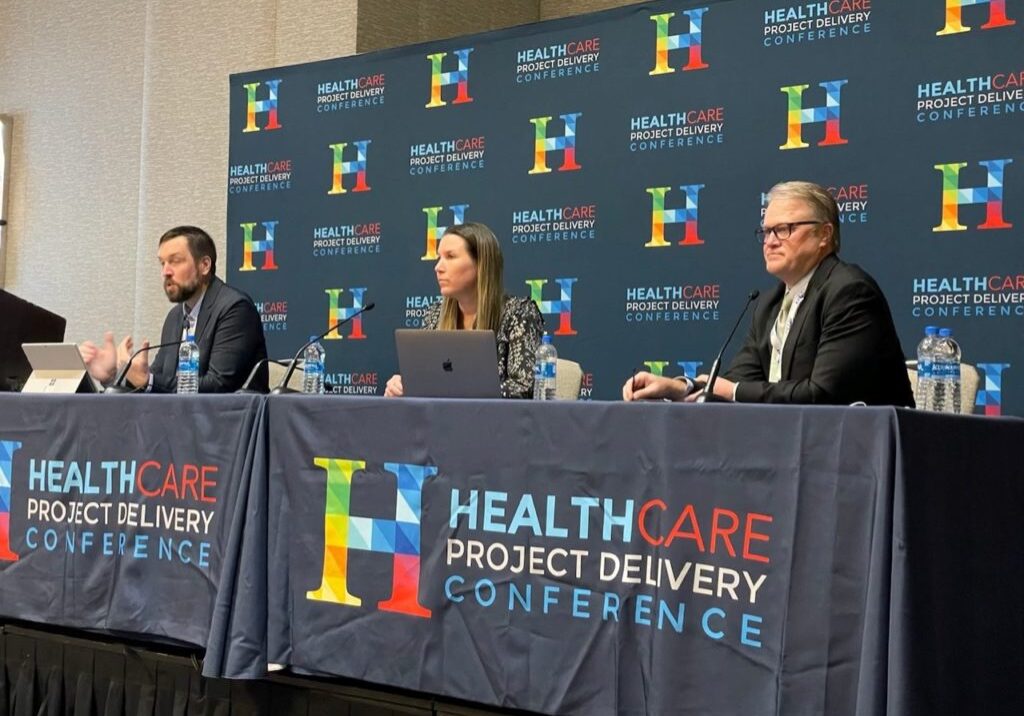Several years ago, the U.S. Pharmacopeial Convention published USP General Chapter <797> Pharmaceutical Compounding — Sterile Preparations, and USP <795> Pharmaceutical Compounding — Nonsterile Preparations. These standards were the result of decades of deliberation over how best to respond to patient injuries resulting from sub-potent, super-potent, or contaminated medications.
With the implementation of USP <795> and <797>, along with changes in staff training in the handling of compounding sterile preparations (CSPs) and other medications, these USP chapters also created new guidelines for the design and function of medical facilities as well when it came to the compounding of medications. Chief among these changes was the implementation of primary engineering controls (PECs), including laminar airflow workbenches (LAFWs), compounding aseptic isolators (CAIs), biological safety cabinets (BSCs), and compounding aseptic containment isolators (CACIs). The new USP chapters also called for buffer and ante areas for sterile compounding areas, improvements in air supply, the use of HEPA filter systems, negative air pressurization, and other safety measures which often required significant modifications of existing architecture in medical facilities.
But while USP <795> and <797> were far reaching, they were specifically designed to protect the health of patients. Meanwhile, hospital staff were receiving, handling, compounding, and administering medications identified by NIOSH as hazardous drugs (HDs), without sufficient safety measures in place to protect them from reproductive harm and other serious health impacts associated with these drugs.
This ultimately lead the U.S. Pharmacopeial Convention to develop USP General Chapter <800> Hazardous Drugs—Handling in Healthcare Settings. USP <800> has been specifically designed as a legally enforceable standard, in order to protect medical staff, patients, and the environment from exposure to antineoplastic (“chemo drugs”), non-antineoplastic, and other HDs. As a member of the Compounding Expert Committee which wrote UPS <800> put it, “The intent and scope of USP <800> is much broader than some of the requirements found in USP <797>. It starts with the guy on the loading dock who first receives the drugs, all the way through to the nurses who administer them. While it focuses on the protection of health care workers, it’s also about patient safety. By keeping ourselves safe, we are protecting our patients as well.”
While the deadline for complying with USP <800> is fast approaching in many regions, thousands of medical facilities are still out of compliance with USP <800> due to the significant architectural modifications needed to bring existing structures into compliance.
Who must comply with USP <800>?
USP <800> applies to all facilities where hazardous drugs are prepared, stored, transported, or administered. This includes hospitals, pharmacies, clinics, physician’s practices, and most acute care facilities.
Compliance requirements do not vary according to the size of the facility or the frequency with which staff compound and administer hazardous drugs. Clinics which compound 1 to 2 doses of such medications per week and very large acute care facilities which dispense hundreds of doses per day are subject to the same requirements.
However, complying with USP <800> poses a special challenge to facilities with stick-built compounding facilities, and positive-pressure storage and handling facilities. Previously, this was adequate for compliance with USP <795> and USP <797>.
Enforcement of USP <800> varies from state to state, and many states do not require compliance. But it should be noted that 34 states required compliance with some or all of USP <797> as of 2017, implying that the majority of states will ultimately require compliance with at least key elements of USP <800>, or will implement comparable standards. In addition, the Centers for Medicare and Medicaid Services (CMS) requires compliance with USP <800> to qualify for Medicare and Medicaid reimbursement programs.
What architectural modifications to existing facilities are necessitated by USP <800>?
Receiving: USP <800> requires that hazardous drugs and their active pharmaceutical ingredients (APIs) be unpacked from their original packaging in neutral or negative pressure rooms. This must be a dedicated space for receipt and unpacking—unpacking is not allowed in positive pressure rooms or sterile compounding facilities.
Storage: USP <797> required that all hazardous drugs be stored separately from non-hazardous drugs. However, USP <800> revises this requirement, allowing non–antineoplastic HDs and reproductive risk-only drugs—as well as antineoplastic drugs in final dosage form—to be stored alongside non-HDs.
However, antineoplastic drugs and APIs not meeting the above requirement must be stored separately in rooms with negative pressure and at least 12 air changes per hour (ACPH). Likewise, refrigerated antineoplastic drugs must be stored in a dedicated refrigerator placed in a negative-pressure room.
Compounding: This is where new USP <800> requirements are the most onerous for existing facilities.
Compounding of non-sterile HDs must be performed in containment primary engineering control (C-PEC) devices in containment segregated compounding (C-SEC) areas with fixed walls that serve as containment secondary engineering controls, with external ventilation that vents vertically into the external outdoor environment. Rooms in which compounding is performed must have negative pressures of 0.01 to 0.03 inches of water column relative to the air pressure of adjacent spaces and have at least 12 ACPH. In addition, low- and medium-risk sterile drugs that will be administered within 12 hours may be compounded in these spaces.
Cleanroom suites in which sterile HDs are compounded must meet all the above requirements, and when in use the air supply must be HEPA-filtered to the standards of an ISO Class 7 cleanroom, with at least 30 ACPH. Adjacent areas such as buffer rooms and ante rooms should maintain positive pressures of at least 0.02 inches of water column.
Some facilities have run into compliance complications due to focusing on ensuring negative pressures in compounding areas, without being attentive to how much negative pressure is generated. This is likely due to the fact that contractors have become habituated to the requirements of USP <797>, which only mandated negative air pressures greater than 0.01 inches of water column.
Typically, C-PECs utilize an ISO Class 5 flow hood with an ISO Class 7 buffer. Three types of hoods meet the specifications of USP <800>:
- Class II, Type B2 Total Exhaust BSCs
- Class II, Type A2 70% Recirculated/30% Exhaust BSCs
- Compounding Aseptic Containment Isolators (CACIs)
When possible, closed-system transfer devices (CSTDs) should be utilized when compounding HDs, and are required when administering antineoplastic drugs.
What difficulties are health care and pharmacy facilities encountering when renovating to comply with USP <800>?
One of the biggest issues is that flow hoods must exhaust into the outdoor environment vertically. This has created significant difficulties for older medical facilities and pharmacies, many of which have their compounding facilities in basement rooms where airflow is minimal. Consequently, it’s often necessary to build an exterior shaft running up the outside of the building to the roof. Kaiser Permanente reported that such challenges necessitated the renovation of more than 100 pharmacies.
Secondly, USP <800> recognizes the fact that excessive negative pressure can pull dust and other contaminants into negative pressure spaces via cracks, conduits, and other channels. Thus, exceeding negative pressures of 0.03 inches of water column falls out of compliance with USP <800>.
Dr. Corbin Bennett, Senior Director of Oncology and Outpatient Infusion Pharmacy Services at Kaiser Permanente, was quoted as stating that Kaiser originally believed that achieving the necessary negative pressures “would be rather straightforward because we’ve been building our pharmacies, including those we opened just two to three years ago, with negative pressures that exceed 0.01.” However, “[S]ome of those negative pressures are 0.05 to 0.07, and we’re finding that ratcheting those negative pressures underneath the 0.03 cap requires very precise, sophisticated HVAC design.”
Smaller facilities may also be caught off guard by the fact that exemptions in USP <797> for the compounding of small volumes of HDs in the same areas as non-hazardous drugs do not exist in USP <800>. Even the smallest amounts of HDs must be compounded in designated spaces. For healthcare facilities where only very limited quantities of HDs are needed, it may be more cost effective to outsource HD compounding, to reduce the amount of renovation needed.



